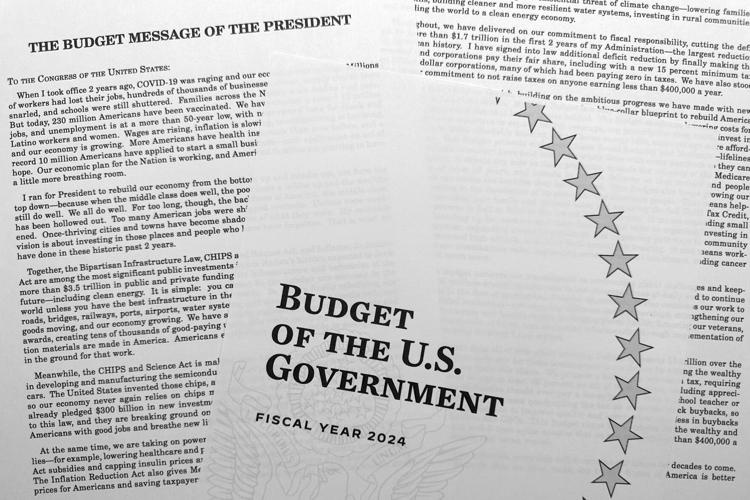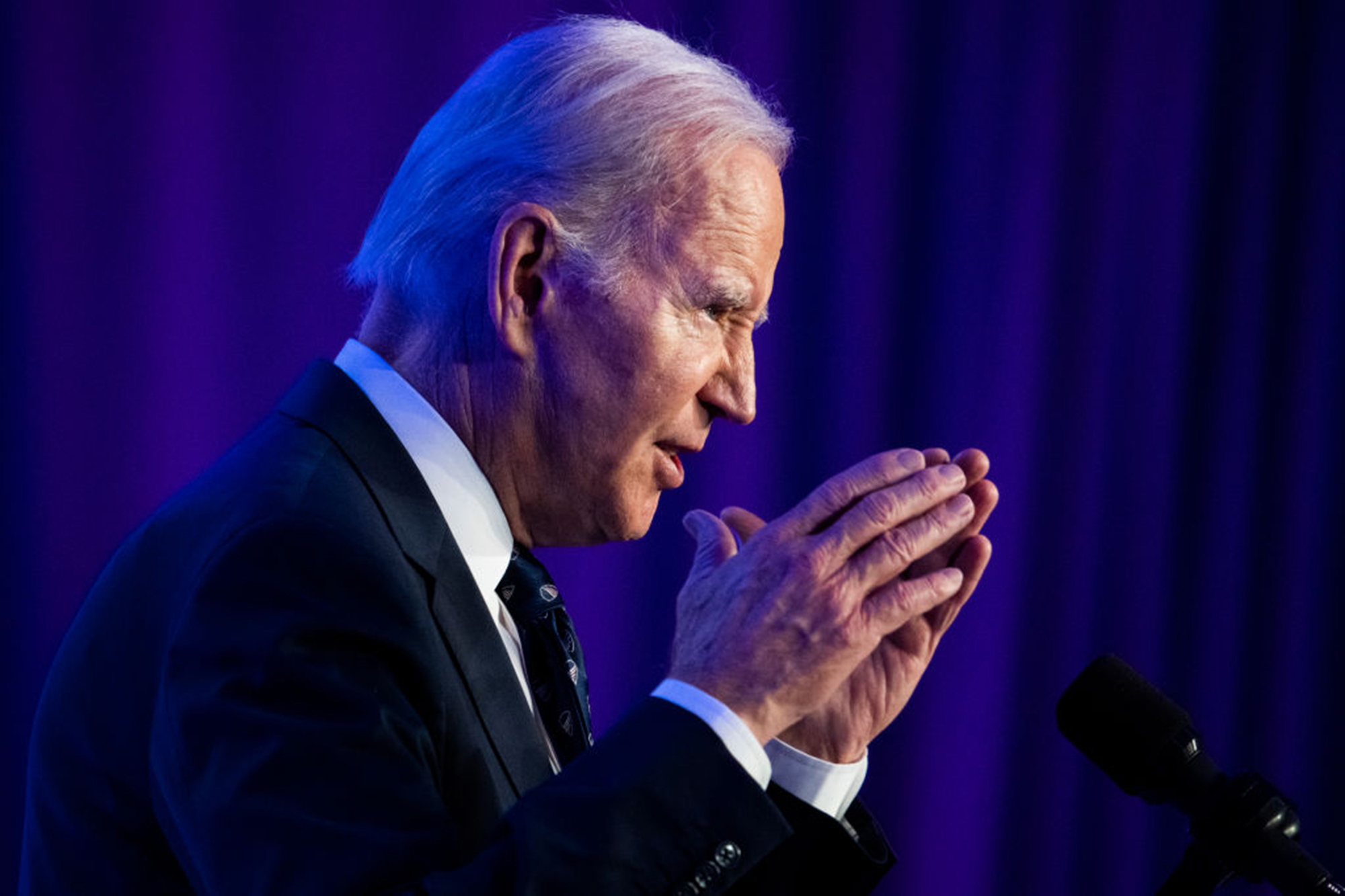President Biden just proposed $4.7 trillion in tax increases on businesses and individuals, raising U.S. tax rates to some of the highest in the developed world.
President Biden’s budget proposal for fiscal year 2024 includes a wide array of policy changes, new programs, increased spending, and higher revenue. The budget attempts to balance two aims that are incompatible: increasing expenditure, which accelerates the unsustainable nature of the federal budget, while confining tax hikes to a small subset of high-income Americans.

The budget proposes tax increases of $4.7 trillion on firms and individuals, making U.S. tax rates among the highest in the developed world. Revenues are anticipated to reach 20,1% of GDP by 2033, which is 2.7 percentage points over the 50-year average. All of these tax revenues are insufficient to stabilize the government debt as a proportion of the economy.
The administration plans to release additional details on each of the proposed tax increases next week. Based on summary documents, current reporting, and past proposals, we have a good sense of how the White House would like to increase taxes.
The FY 2023 budget was ominously silent on what happens at the end of 2025 when the 2017 Tax Cuts and Jobs Act expires and taxes automatically increase for most Americans. This hidden tax increase of another $1 trillion to $2 trillion (depending on the assumptions) is baked into the president’s budget baseline. The current budget acknowledges but does not explicitly extend the tax cuts or protect middle‐class Americans from the pending tax increases.
There are three main types of new taxes and tax hikes in the budget: higher taxes on wage income, higher taxes on investment income, and higher taxes on businesses.The President has said that he will only raise taxes on people who make more than $400,000 a year. Because of this, most of the clearly stated tax increases are aimed at people with high incomes. The federal tax system in the U.S. is already very progressive, with the people with the highest incomes paying the most taxes on average. With the proposed tax hikes, the United States will likely have some of the highest income and business tax rates in the Organization for Economic Co-operation and Development (OECD).
Higher tax rates on the wages of a small group of the United States' most productive executives and business leaders will discourage them from working and cause them to act in other ways that hurt the economy. This will make the economy less dynamic and cause it to grow more slowly.
Higher taxes on investment income target the money that goes to successful entrepreneurs who take risks and keep going even when things don't work out to build high-return businesses that help people all over the world. By coming close to doubling the capital gains tax rate and adding other taxes, like a tax on stock buybacks and a tax on unrealized capital gains, the tax on capital gains would be much higher than the rate that would bring in the most money. This would make it harder for Americans to come up with new ideas.
Investment and growth are also slowed down by higher taxes on businesses. In the budget, the corporate income tax rate will go up by 7 points, to 28%, and the Net Investment Income Tax (NIIT) will be applied to pass-through business income as well. Research on the economy shows that workers, not investors or consumers, usually pay between 75% and 100% of the cost of higher corporate taxes by getting paid less. Less investment and slower growth in productivity cause wages to go down.

Here is a list of some of the president's most important tax ideas, which would bring in most of the extra $4.7 trillion.
Increase top marginal tax rate to 39.6 percent. The highest income tax rate is 37%, and it applies to people who make more than $578,125 (or $693,750 if they are married). The budget calls for the top tax rate to go back to 39.6%, where it was in 2017 before the tax cut, and for the top tax bracket to be lowered to $400,000 for single filers and $450,000 for married filers. After taking into account state and local income taxes, the highest rates for Americans in many places, like California, Hawaii, New Jersey, and New York City, will be above 50%.
Increase corporate income tax rate to 28 percent. The corporate income tax rate went from 35%, which was the highest in the developed world, to 21% after the 2017 tax cuts. Even when state corporate income taxes are taken into account, the average corporate tax rate in the United States is still higher than the average worldwide. Biden wants to raise the corporate income tax to 28%, which would give the United States the highest corporate tax rate in the developed world once again. In addition to a higher top rate, the budget makes big changes to how taxes are handled internationally, adopts an OECD proposal for a minimum tax, and makes other changes that are meant to raise taxes on American businesses.
Tax capital gains and dividends at top rate. The highest tax rate on long-term capital gains and dividends is 20%, plus the NIIT of 3.8%. The fact that the tax rate on investment income is lower than the tax rate on wages is because the principal of the investment was already taxed when it was earned as a wage, and the profits of the business were already taxed by the corporate income tax. The budget suggests that people with incomes over $1 million should pay taxes on capital gains at the new top marginal income tax rate of 39.6% (plus the NIIT of 5%).
Expand Net Investment Income Tax (NIIT) at 5 percent rate. Obamacare's NIIT of 3.8% applies to most non-wage passive income (mostly capital gains and other investment income) for taxpayers with incomes above $200,000 (or $250,000 if they are married). The NIIT was made so that active business income wasn't taxed, so that small and family-owned businesses wouldn't have to pay more taxes. For incomes over $400,000, the budget proposes to add more types of income to the NIIT and raise the rate to 5%. When you add the 5 percent NIIT to the fact that capital gains are taxed at the top income tax rates, the top federal marginal capital gains tax rate goes up to 44.6 percent.
Quadruple stock buyback tax. The Inflation Reduction Act of 2022 implemented a new 1 percent excise tax on the total value of stock repurchases or “stock buybacks.” A stock buyback is when a business repurchases shares to return unused profits to investors and is similar to an optional one‐time dividend payment. The budget proposes quadrupling the new tax on buybacks to 4 percent, which will lower investors’ after‐tax return on the affected investments, and likely induce firms to rely more heavily on dividend payments.
End step‐up in basis at death. Under current law, capital gains are taxed when the gain is realized—when the investment is sold and there is an actual profit to tax. If unrealized capital gains are inherited at death, no tax is due, and the value of the original investment from which taxable gains are measured (the “basis”) is increased or “stepped up” to the current value. Any future gains are taxable to the new owner when realized. Step‐up in basis protects inheritances, which are often active investments in businesses, from having to be liquidated to pay the tax. The budget proposes eliminating step‐up in basis, making death a taxable event. If the proposal follows the 2023 budget, the change applies to unrealized capital gains over $5 million for single filers ($10 million married).
Creates “billionaire” minimum tax. The budget proposes a new minimum tax of 25 percent on income and unrealized capital gains for “the wealthiest 0.01 percent.” In the 2023 budget, that meant the minimum tax applied to taxpayers with more than $100 million in total wealth. This new minimum tax would be a third, parallel income tax system, adding to the existing alternative minimum tax. The new minimum tax applies to two entirely new tax bases—wealth and unrealized capital gains. Defining and taxing wealth and unrealized capital gains pose numerous practical challenges.
Tax carried interest as ordinary income. Many investment managers are compensated with both a traditional wage and incentive‐based pay based on the profits from their investments. The portion of the investment earnings shared with the manager is known as “carried interest” and is taxed at lower capital gains tax rates. The budget would recharacterize this investment income, treating it as ordinary wage income.


























